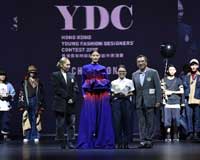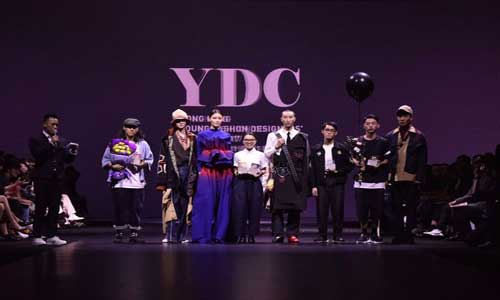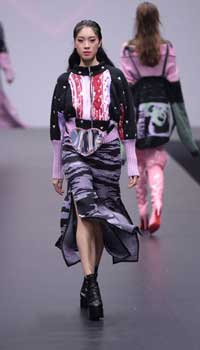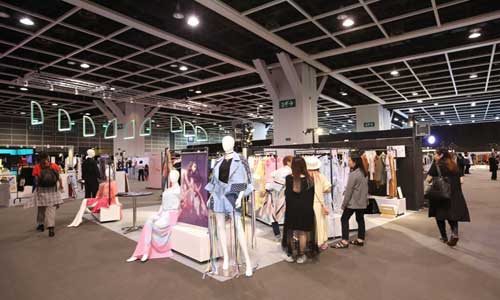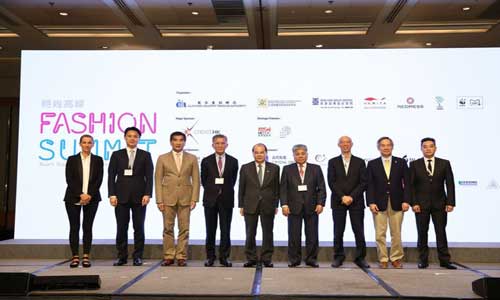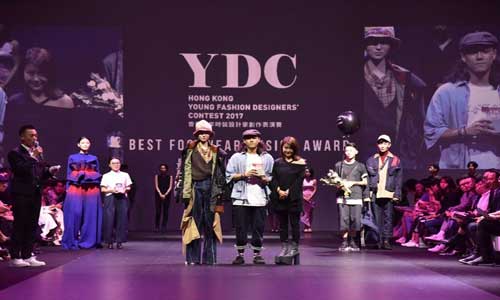FW
P Nataraj has been elected the new chairman of SIMA (Southern India Mills’ Association). Nataraj is the managing director of KPR Mill. A science graduate and fellow member of the Institute of Chartered Accountants of India, he is a member of Committee of Confederation of Indian Textile Industry and also VP-Indian Cotton Federation. He is a managing trustee in the KPR Institute of Engineering and Technology that extends quality education. He is involved in the functioning of the KPR IAS Academy that provides free coaching to aspirants of competitive examinations.
K Vinayakam has been chosen deputy chairman. He is managing director of Chennai Silks. Vinayakam is a philanthropist and a recipient of awards and accolades.
The new vice chairman of SIMA is Ashwin Chandran, who is chairman and managing director of the Coimbatore-based Precot Meridien Group, which has textile units in Tamil Nadu, Kerala, Andhra Pradesh and Karnataka. A graduate in textile technology, he is a member of Cotton Textiles Export Promotion Council, Mumbai, and Confederation of Indian Textile Industry, New Delhi.
SIMA was set up in 1933 and has a strong data base, it advises members on all functional areas of the textile industry, from designing a textile project to marketing.
Since 1992, Oeko-Tex has worked to provide safer products by eliminating hazardous substances from the global textile supply chain. The Zero Discharge of Hazardous Chemicals’ Manufacturing Restricted Substances List covers chemical substances that are limited or banned from intentional use in the production of apparel and footwear materials and trim. Controlling or excluding the use of these substances supports the ZDHC’s mission of removing hazardous chemicals from the apparel and footwear value chain so that they do not harm workers, consumers, or the environment.
In January of this year, Oeko-Tex announced a partnership with ZDHC to collaborate with other leading brands and apparel and footwear sustainability advocates.
Eco Passport by Oeko-Tex certification program provides a confidential mechanism for chemical suppliers to confirm that their chemical products are safer to use in manufacturing. Now chemical formulations that are Eco Passport by Oeko-Tex certified are recognized as conforming with ZDHC MRSL.
Oeko-Tex helps chemical suppliers verify their formulations while safeguarding their intellectual property. The Eco Passport program serves as a trusted third party system to review formulations. Industry, consumers, governments, and NGOs are asking for safer chemistries to be used in supply chains.
Chemical formulations are checked against the comprehensive Oeko-Tex list of substances of concern and then verified by laboratory evaluation to ensure that they do not contain unsafe contaminants.
The growing adoption of smart products by professional athletes to optimize performance level and prevent potential injuries is anticipated to drive smart clothing market across the globe. Sports associations are heavily spending on these products to eliminate the possibility of injuries.
Rising awareness associated with fitness coupled with the demand for monitoring body activities such as blood pressure and heart rate is expected to catapult the smart clothing market demand.
The launch of products with advanced specifications such as tracking muscle activity offers lucrative opportunities. Moreover, other features include reduction and prevention of sports injuries resulting from improper warm up and exertion. Increasing adoption for sensor-enabled products eliminates the use of smart wearables for specific functionality.
Smart jackets can control the mobile device of the user followed by features such as one tap answering and rejecting calls and connect to music and camera services. The smart T-shirt segment is predicted to grow significantly owing to the data offered by these products such as perspiration rate, heart rate and muscle engagement which are analyzed for increasing the efficiency of the wearer. High adoption of smart uniforms in military and defense applications is expected to drive industry growth.
As one of the main highlights of CENTRESTAGE, the Hong Kong Young Fashion Designers’ Contest 2017 awards ceremony celebrated young talent on September 9. During the event, Arto Wong was named Champion and winner of the ‘New Talent Award’. She received a cash prize and a study trip aboard, including a visit to the Japanese design GVGV studio, sponsored by Sun Hing Knitting Factory. Wong will also receive mentorship from Joyce Boutique, to develop a capsule collection that will be sold at select shops under Joyce Boutique. The winners of the Hong Kong Young Fashion Designers’ Contest 2017 are champion and new talent award: Arto Wong for ‘Zero to Unlimited’; first runner-up: Sonic Lam for ‘Barren Land’; second runner-up: Wilson Choi for ‘The Stolen Soul’; and best Footwear Design Award went to Jason Lee for ‘Kingdom of the Underground’.
Innovative young minds at work
Inspired by immense possibilities of transforming molecules to matter, Wong’s designs sought to play with weight and proportion. Crafted from polyester yarn, the designs achieved volume, while remaining incredibly light. The collection serves as a story of aspiration and empowerment to never underestimate the energy released by combining small molecules. The overall YDC champion and winner of the New Talent Award says it was a challenge finding time to finish the outfits being a full-time designer. Apart from time-management challenges, she encountered difficulties in trying to create volume, weight and the bounce effect for the ruffles in her knitwear collection, eventually succeeding after trying numerous techniques. The experience has inspired her to continue exploring the infinite possibilities of knitwear.
Sonic Lam, the first runner-up of YDC, points out YDC is a competition that every Hong Kong fashion design student aspires to take part, and was delighted to have won the award on his first try. He said he would eventually like to start his own brand after the study trip, adding that he was ready for the challenge of the endeavour. Fascinated by how Hong Kong has evolved from a barren rock to an international hub, he strives through his designs to preserve the best from the city’s past and make them relevant for this generation. Watered gauze, a wispy, silky fabric from the olden days, was extensively used in this collection. Its deliberately washed-out texture lent itself to a distinctive vintage feel. By fusing together old and new, the collection breathes new life into old traditions.
Collegiate apparel with a rebellious undertone defines Wilson Choi’s collection. The 50s Swedish movie Ondskan compelled him to examine the subversive bullying culture plaguing schools and society. Navy blue, a colour broadly associated with school uniform, was chosen as the primary colour that ties together his collection. Furthermore, maroon brushstroke stripes introduce a sense of defiance, resembling graffiti-like street art. The sportswear-inspired pieces incorporate bonding and seamless techniques on wool; affixing a number of pockets to enhance the designs’ practicality and functionality.
International panel of judges
YDC 2017 had invited Mug, founder and designer of popular Japanese fashion brand GVGV to be the VIP judge. Mug appreciated the overall performance of YDC designers and said each contestant should strive to express their own style through designs that are true to themselves. Praising the winning knit collection, she said it showcased originality, personal style and market value, noting that Arto Wong will go on to have a flourishing design career.
Mug joined other senior industry and media representatives that comprised the judging panel. Lawrence Leung, Chairman of the HKTDC Garment Advisory Committee was chief judge, alongside fellow judges: Tasha Liu, Brand Director and Co-founder of C.DONGLIANG and LABELHOOD; Michael Mok, General Merchandising Manager of Joyce Boutique (Hong Kong); Marcella Wong, Chief Editor of Marie Claire; among others. The best work was selected based on creativity and originality, market potential, workmanship, use of fabrics and overall visual appeal.
The inception
Organised by the Hong Kong Trade Development Council (HKTDC), YDC has been nurturing and identifying emerging talents in the local fashion industry for nearly four decades. To promote Hong Kong fashion designers to the world, the HKTDC launched the fashionally.com online platform in early 2012 to provide a one-of-a-kind networking and exchange platform for global fashion experts to connect, inspire and share information.
The four-day fashion extravaganza, Centrestage, organised by the Hong Kong Trade Development Council (HKTDC), concluded successfully on September 9. It featured more than 210 fashion brands from 22 countries and regions, showcasing latest brands and designer collections. The show attracted 8,500 buyers from 73 countries and regions. Buyers from Thailand, Vietnam, Japan, Singapore and Indonesia increased significantly, and Asian buyers accounted for nearly 40 per cent of the total buyer attendance.
Benjamin Chau, Deputy Executive Director, HKTDC, points out “Centrestage is an ideal promotion and launch platform for Asian fashion brands and designers. In its sophomore edition, Centrestage continued to be a focus of attention for Asia's fashion industry. The event attracted many international fashion brands and buyers, particularly those keen on developing Asian markets. Many up-and-coming local designers also staged fashion shows during the event to showcase Hong Kong's creative designs to buyers and media from around the world.”
A great knowledge sharing platform
A number of master sharing sessions were held during Centrestage. At one of the sessions, Jean Colin, VP- global expansion, fashion division, Samsung C&T Corporation, which represents the Korean brand JUUN. J, analysed the brand's rise to global fashion prominence. Colin said Juun. J realised his dream of establishing his own brand by partnering with Samsung C&T. The company put together a team to help the brand find its market position, and supported Juun. J to join overseas Fashion Week events, she said.
A perfect launch platform
First-time exhibitor Hausie Showroom, a newly established fashion Hong Kong-based company that represents more than 20 international brands was among the exhibitors. Vivian Pang-Williams, Founder, Hausie Showroom, says in their debut participation, they wanted to showcase a variety of fashion collections, jewellery and bags for over 17 brands they exclusively distribute. The company received positive feedback and found about 20 potential customers from different markets, including Galeries Lafayette from France, Aishti Group from Lebanon, and multi-brand stores from the Chinese mainland.
Hong Kong brand ASTRA Tailoring also launched a new menswear label at Centrestage. Design director Ayumi Kwan and partner Angus Tsui said the label’s zero-waste design and emphasis on sustainability attracted buyers from the Chinese mainland, Singapore, Thailand and Japan. Of those enquiring about their products, about five to 10 were serious buyers, with some fabric suppliers also approaching them to explore cooperation.
Hong Kong's fashion in the spotlight
Nicholas Chong, CEO, fashion retail chain YFS, which operates 138 stores in Malaysia, said the company has already identified several Hong Kong designer brands for cooperation. They include: fashion jewellery by CIAO and casual wear for ladies by FromClothingOf. Menswear collections by Hong Kong designer Angus Tsui are also appealing. Chog will explore collaboration to create a new menswear series for the HK$1,000-HK$4,000 retail price market.
Buyers found a great deal of business at the show. Buyer Catherine Coppin was willing to place order with Ffixxed Studios after witnessing its unique collection. Other potential brands such as Zero Design and Garance from Korea, and Kevin Ho, House Of V And Loom Loop from Hong Kong were also worth exploring business.
Henry Pang, buyer of Halo Designer Chic from the Chinese mainland, found some suitable Hong Kong designs at Centrestage. One of the brands was Methodology who plan to show their new 2018 spring/summer designs to Pan. The potential order is estimated between Rmb10,000 to Rmb30,000. Talks are underway with another Hong Kong brand, Anveglosa, for new fur designs for fall/winter 2018.
Cautious optimism in the air
The HKTDC commissioned an independent research agency to conduct on-site surveys during CENTRESTAGE interviewing more than 270 exhibitors and buyers to gauge their view on the outlook for the fashion industry and upcoming product trends. The survey found the industry is cautiously optimistic about sales in the coming year. More than half the respondents expect overall sales to remain steady, while about 40 per cent expect overall sales to grow. Half the respondents expect production costs or sourcing costs to stay unchanged. While nearly half of industry players surveyed expect sourcing price/production cost increases, more than 60 per cent of the respondents said they would not raise unit or retail prices, reflecting a general tendency in the industry to not transfer increased costs to customers.
In terms of markets, more than 80 per cent of respondents consider Hong Kong, Korea and Taiwan to have the best growth prospects among traditional markets in forthcoming two years, while 75 per cent respondents see Chinese mainland as the most promising emerging market. More than 40 per cent respondents favour Eastern Europe and ASEAN markets.
As for product trends in coming year, 70 per cent respondents expect womenswear to be most popular, followed by casual wear and fashion jewellery. Limited-edition collections, brand licensing products and brand crossover promotion were identified as the most prevalent product development strategies in the coming year.
In terms of sales channels, more than 70 per cent said they are engaged in e-tailing, a significant increase from previous year, which saw only over half of the respondents reporting they are involved in such business - an indication that the fashion industry is increasingly serious about e-commerce. On average, online sales account for nearly 20 per cent of the total sales revenue. The top product types sold through e-tailing are womenswear, casual wear and menswear.

On the last day of CENTRESTAGE, the organisers hosted an awards ceremony for the 17th Footwear Design Competition Hong Kong and a product parade of the winning entries. Recognising creative designers in the footwear industry, the competition was co-organised by the Federation of Hong Kong Footwear Ltd (FFHK) and the Hong Kong Trade Development Council (HKTDC). Guests included: Bernard Chan, Under Secretary for Commerce and Economic Development; Frank Leung, Chairman, Federation of Hong Kong Footwear Ltd; Mandy Tang, President, Federation of Hong Kong Footwear Ltd; Selina Chow, Permanent Honourary Advisor of the Hong Kong Footwear Design Competition; Felix Chung, Peter Shiu, Wong Ting-kwong, members of the Hong Kong Legislative Council,and Stephen Liang, Assistant Executive Director of the HKTDC.
Recognising talent
An annual signature event for the industry, the Footwear Design Competition Hong Kong is recognised as the cradle for nurturing and discovering new footwear- design talent needed to sustain future development of the industry. About 70 pieces were shortlisted from nearly 800 inspiring entries received this year, by a judging panel comprised of professionals from related fields. Among them were fashion designers and image consultants, such as Henry Lau, Mountain Yam, Polly Ho, and Christina Dean, founder of the environmental NGO Redress, as well as representatives from the HKTDC, design institutes and industry elites.
Entries competed in six categories: Ladies' Shoes, Ladies’ Boots, Handbag, Children’s Shoes, Men's Shoes as well as the Design & Make Collection DIY – Green Footprints Creation, the latter of which is a new category to promote environmental living. Gold, Silver and Bronze award winners were named in each category, along with prizes awarded to a Belle Overall Champion and a Best Design Award, voted by the public via the FFHK’s Facebook page.
Winning entries
The entry ‘Infinity’ was named Belle Overall Champion, Gold Award in the Ladies’ Shoes category and Best Design Award. Motivated by the environment problem of coral bleaching, designer Joanne Li Wai-ting was inspired to use 3D printing technology in her creation. She used a white-colour theme to symbolise dying coral reefs, in a bid to raise public awareness about marine pollution. Designer Chan Ka-ling, Chan Pui-lam and Lam Wing-yee each received two awards for their exceptional designs. All the shortlisted and winning works were on display during the event.
Technical textiles are the new buzz in Indian textile industry and among emerging and inventive industries in India. Technical textiles offer several advantages in their functional aspects for improving health and safety, cost effectiveness, and durability and strength of textile material. In India, this sector is in its nascent stages while globally it’s a multi-million dollar industry. A large number of technical textile products are consumed by different industries like automotive, healthcare, infrastructure, oil and petroleum, among others.
Indian companies have started producing technical textiles for the international market. Though at a nascent stage, technical textile production in India with the right investment and exposure will definitely compete with international production.
The technical textile industry also has about nine per cent of the world’s total consumption manufactured in India. Indian companies have been introducing several new developments in textile technology. Indian companies are developing products using meta aramid, a textile produced in India which is made from a blend of materials which are environment friendly, lightweight and perform better than asbestos.
These meta aramid products can replace the carcinogenic asbestos in the Indian industry which was claiming the lives of people using them.
GST is expected to increase prices of handloom products by 7.7 per cent. One reason is weight of products in the clothing consumption basket are different due to fiber, make, quality etc. So, a shift of consumers away from handloom products is expected. GST is not revenue-neutral for handloom products. It will change the structure of production and market relations. The rise in cost of handloom products will make them less competitive in retail markets.
GST will increase prices of cotton textiles over synthetics. As a result, blending of synthetic fibers with cotton fibers will gain traction. There is likely to be a huge impact of GST on the fiber mix in the Indian textile industry.
GST is likely to depress natural fiber production and increase man-made fiber production. Organic cotton and organic fiber production supply chains would be stressed. There is no clarity on the classification of handloom products as on date under GST.
GST will impact business strategies of investors, master weavers, cooperatives, retailers and suppliers. Handloom market places, including exhibitions, will have to make necessary changes to handle the new requirements emerging due to GST. The handloom sector is the second largest rural employment provider next to agriculture.
Around 22,900 professional buyers from over 50 countries visited CPM Moscow held from August 30 to September 2. This is an increase of 7.42 per cent over previous year. The show also saw the participation of 1,300 brands, an increase of 31 per cent over the previous year, and 700 exhibitors from 27 countries..
Successful elements of the edition included a top buyer lounge, a fashion show and a fashion contest. A particular visitor magnet, especially for international brands and their representatives, was the CPM Fashion Night with celebrity representatives from Russian TV, Eastern European social media stars, influencers, the media and VIPs.
With segments like lingerie and swimwear, CPM has been an exciting pulsating platform for European, Far Eastern and Russian exhibitors for almost 15 years now. It is a firm foundation for successful business and sustainable brand launches. Country pavilions of Germany, Italy, Spain, France and Turkey offered exhibitors interesting opportunities.
Established, professional and topical industry forums also contributed to the increasing numbers. Professional buyers enjoyed substantiated, trendsetting presentations, forums and panels of an international standard as part of the high-profile Russia Fashion Retail Forum. The forum informed about developments regarding clothing exports to Russia and gave insights into the current situation of the Russian clothing market.
Rwanda Development Board (RDB) has signed a memorandum of understanding (MoU) with Huajian Group, a Chinese business and investment company specialising in shoe manufacturing. Huajian Group is owned by Zhang Huarong and it specializes in production of high- and middle-end women’s shoes with three production bases, including one in Ethiopia. The agreement will see the company establish a factory that will be producing shoes, clothes, bags as well as electronic equipment.
Zhang Huarong has invested in Ethiopia and now produce shoes worth over $30 million. His success has shown him that Africa is a place where you can make high quality exports for products consumed by markets like in the US, says Clare Akamanzi, the RDB chief executive.
Zhang says, his company’s plans to invest over $1 billion for the next 10 years and create over 20,000 jobs. Zhang expressed confidence about his future investment in Rwanda as he believes the country’s development strategy is quite similar to China’s. Zhang is interested in investing in electronics and IT development, creating jobs and boosting Made-in-Rwanda exports. He also plans to produce cell phones, air conditioners and computers.
According to RDB officials, the Government has already availed land at the Kigali Special Economic Zone and they believe Zhang’s investment will contribute to export diversification, which is in line with the country’s vision. In April, Zhang stated that, they expect to have put up the manufacturing plant, and that they plan to train about 200 Rwandans before the end of the year.
He highlighted plans to invest and build five light industrial parks in the developing countries of Africa in the next 10 years, producing and processing clothing, shoes and hats, bags and suitcases, electronics and other light industrial products, and will in the process provide 100,000 job opportunities.
RDB points out, the total estimated amount of Chinese investments registered in Rwanda is equivalent to $103 million and the total jobs registered from these investments is 5,425.

